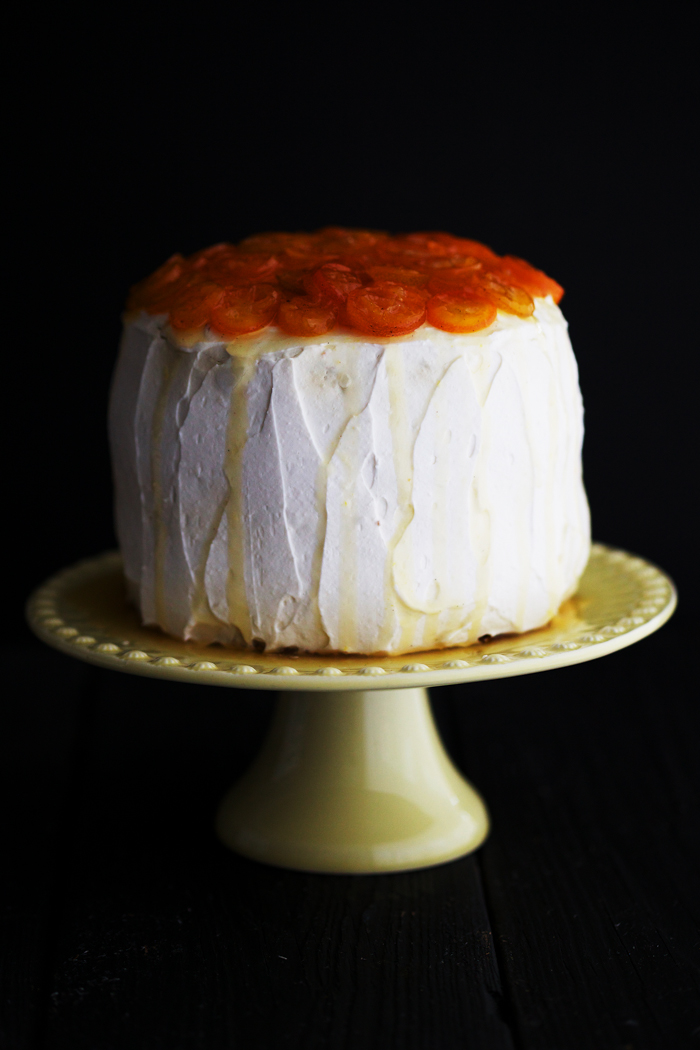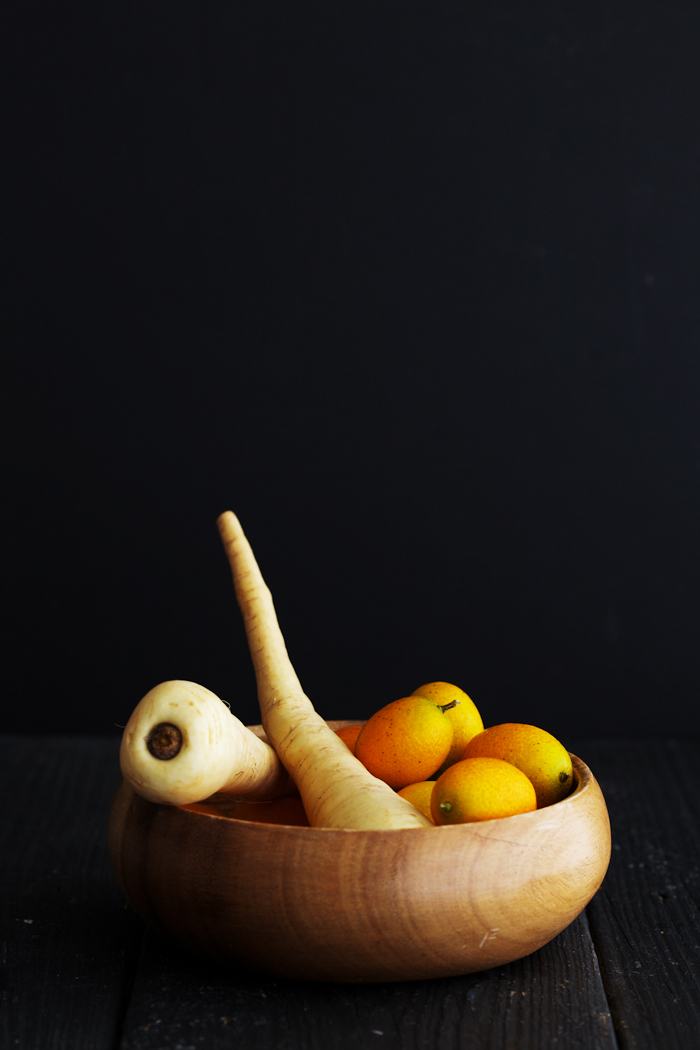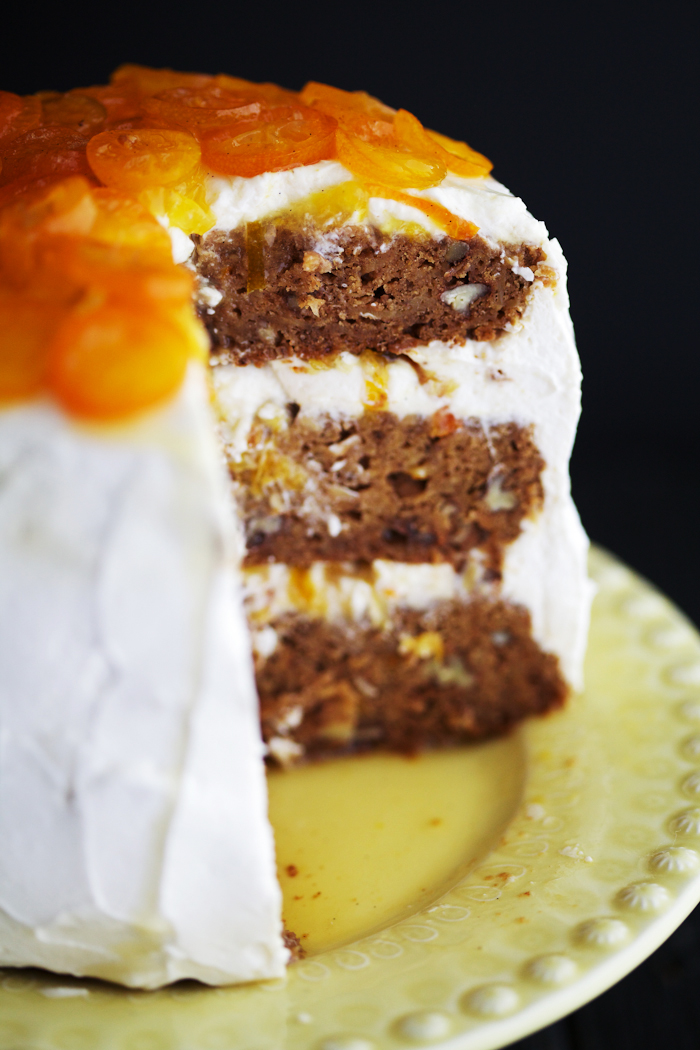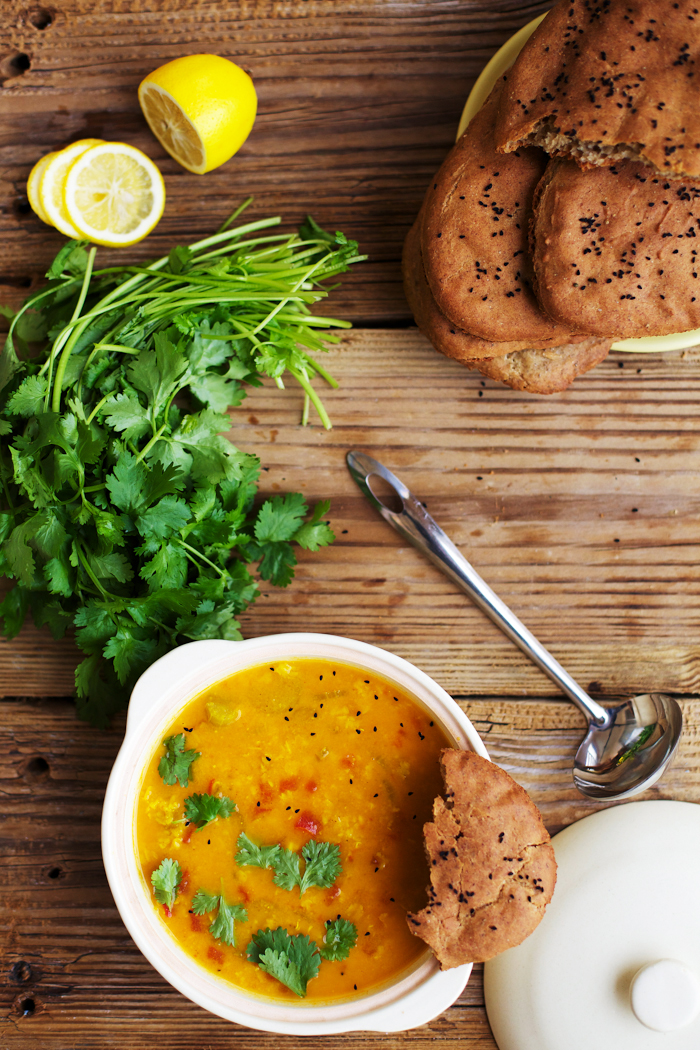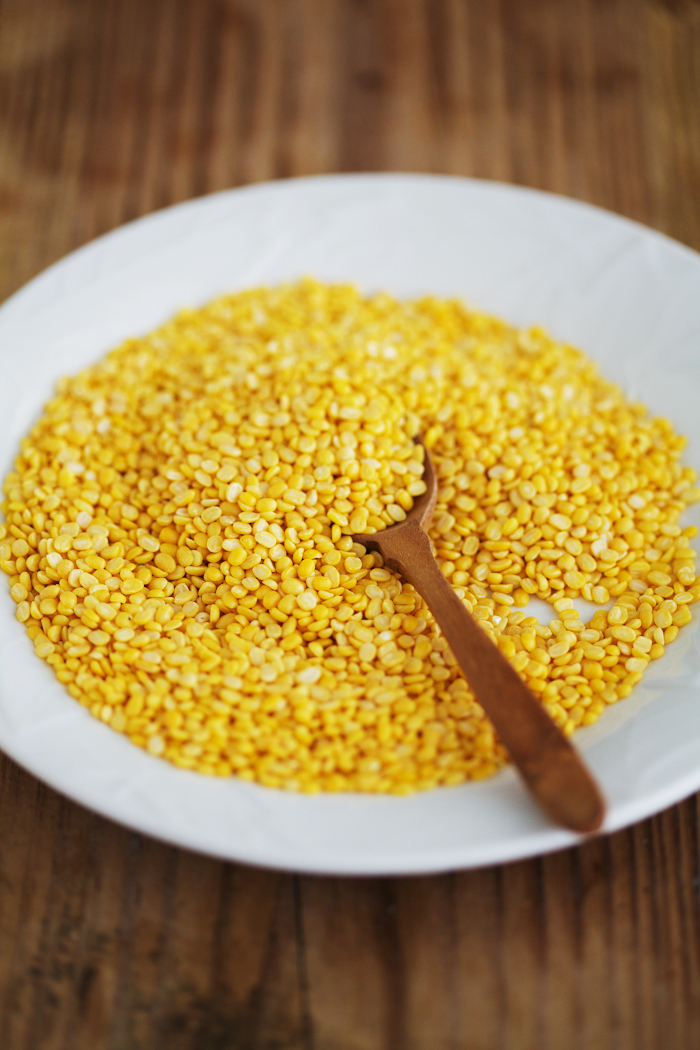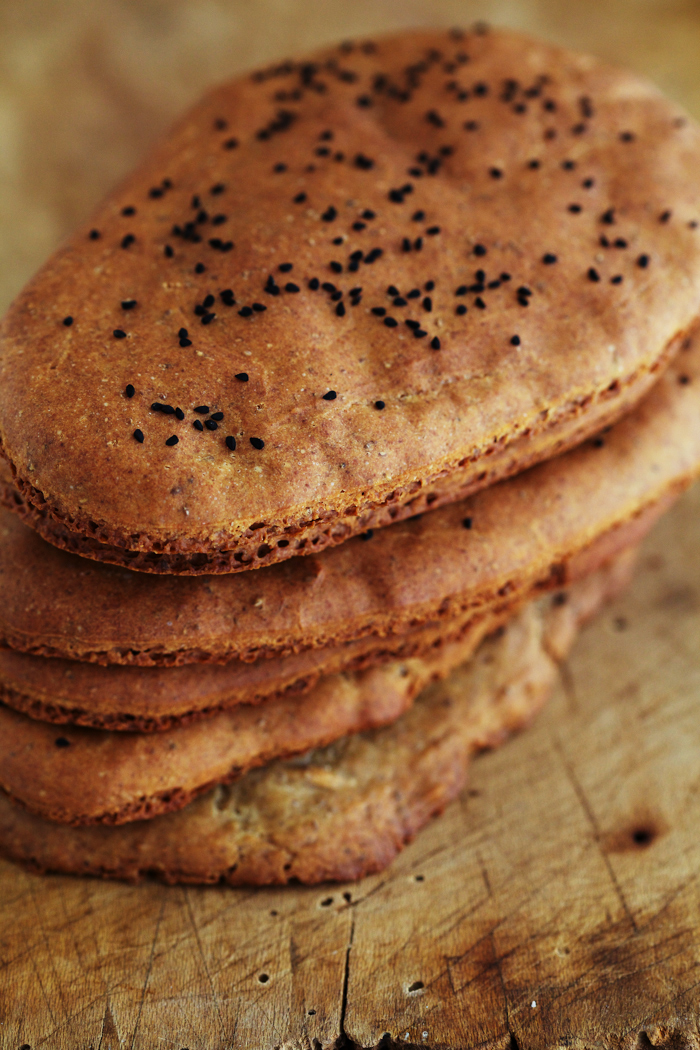
One of the best things about the warm winter here in St. Petersburg, Florida is our Saturday morning market. Situated right on the waterfront in the heart of downtown, the market buzzes with crowds of people, who come here to enjoy the live music, plenty of sunshine, beautiful local produce, and the array of ethnic food stands. Produce from the local organic Warden farm has become so popular in the past few years, that we have to get up earlier on Saturdays if we want to get there before all the red baby kale, salad turnips, huge bushes of fragrant herbs, and lots of other amazing things are sold out.
Somehow, it’s become a tradition among our circle of friends to meet by the Ethiopian kiosk for some spicy vegan fare every Saturday, after packing our bags full of local produce. The food there is very simple yet flavorful and fresh. I, along with most of our friends, prefer their lentils and cabbage with the spongy sour bread, injera, which is traditionally used in place of utensils and pairs perfectly with spicy food.
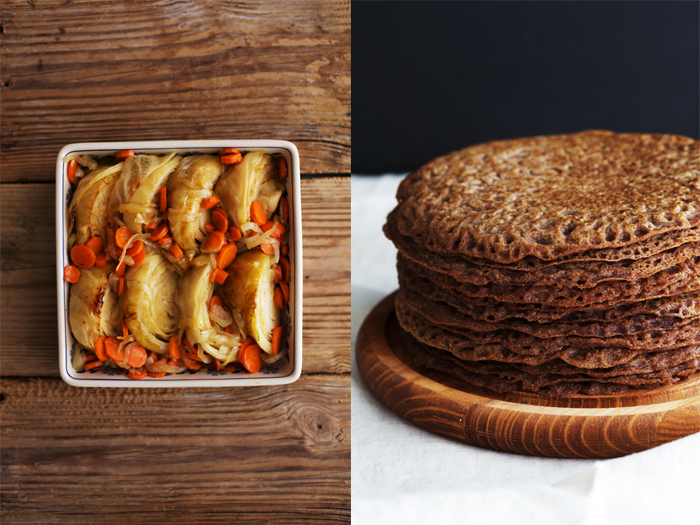
Of course, being as cooking crazed as I am, I presented myself with the challenge of recreating the injera bread recipe at home, which turned out to be quite an easy and interesting process. I found out that traditional Ethiopian injera is made of teff flour, native to Ethiopia, which I never used before. After experimenting with teff, I can justify that it tastes just like rye, only it’s gluten free. It has a slightly grainier texture than rye and is very nutritious. I happen to absolutely love the taste of rye, so teff won my heart right away. After making my own injera from 100% teff flour, I realized that our Ethiopian vendors from the market add wheat to their injera, which would make the process a bit easier. It’s like that time I tried to make sourdough bread both completely gluten free and with gluten – the glutenous recipe went much smoother, and there is no need to add yeast in this case. But I decided to stick to the gluten-free injera, which is not complicated or labour intensive to make at all, but takes five days of waiting for the teff mixture to ferment. A word of warning – the starter has an unpleasant smell during the process, and not in the fruity, cozy way that a wheat sourdough starter does. Once bread is cooked, the smell disappears and the taste is wonderfully earthy.
I looked to an Ethiopian recipe to recreate the Mustard Lentils, while the Braised Cabbage recipe is my own idea of tasty cabbage inspired by our Ethiopian market stand.

Ethiopian Injera
(adapted from here)
to make the starter
1/2 cup teff flour
1/8 teaspoon dry active yeast
3/4 cup water at 70 F (20 C)
1. Whisk all the ingredients in a bowl or a glass jar, cover with something breathable like cheesecloth and leave to rest at room temperature for 2 days. You should see some rising along the way.
2. Stir the starter – it will smell very grassy, almost in a spoiled kind of way (it might even make you think that it went bad – it likely did not). Resist the urge to throw it away, the smell indicates fermentation and that’s what we’re looking for. You also should see bubbles on the surface. Feed the starter with 1/3 cup teff flour and 1/2 cup water, cover and leave to ferment for another 2 days.
3. The starter may separate into two layers at this point – that’s fine. Stir it and feed with another 1/3 cup teff flour and 1/2 cup water. Cover and let ferment for at least another 4 hours or overnight. After that, your starter is ready.
to make the injera
1/4 cup starter from above
1 3/4 cups water at room temperature
1 3/4 cups teff flour
generous pinch of sea salt
1. In a large bowl, dissolve the starter in water. Add in the flour and whisk into a smooth pancake batter. Cover and let it ferment for 5-6 hours. Reserve 1/4 cup of starter for the next batch if desired.
2. Add in salt, whisk again to dissolve and begin cooking the injera. Optionally, you can add 1/2 teaspoon of baking soda to get more bubbles.
3. Heat a non-stick pan or a skillet with a tight-fitting lid over medium heat. Lightly grease it with vegetable oil using a paper towel.
4. Add about 1/3 to 1/2 cup of batter to the pan, depending on its size, tilting it and swirling the batter to cover the surface evenly. Cook for about 1 minute until bubbles appear on the surface.
5. Cover with a lid and steam the injera for about 3 minutes, until the top is set and the bread easily pulls off the pan. No need to flip it over. Remove it and continue with the rest of the batter. It will take a few tries to get the temperature and the cooking time just right.
6. Keep the cooked injera covered and warm. Serve with any spicy dish like this lentil salad.
Braised Cabbage
1 medium cabbage head – cut into 8 wedges
2 medium carrots – peeled and diced
1 large onion – peeled and sliced
3 tablespoons olive oil
1/4 cup vegetable broth or water
sea salt and freshly ground black pepper – to taste
pinch red pepper flakes – optional
1 teaspoon turmeric – optional
1. Preheat oven to 325 F (160 C). Snuggly arrange the cabbage wedges in a lightly oiled baking dish. Drizzle olive oil and broth/water over it, followed by salt, pepper and turmeric, if using.
2. Cover with foil and braise for 1 hour. Remove the dish from the oven and carefully flip the cabbage wedges. Braise for another hour. Increase oven temperature to 400 F (200 C).
3. Remove the foil and place the dish back into the oven for another 15-20 minutes, until the cabbage is golden brown.
Mustard Lentils
1 cup lentils (I used puy, but green or black would work just as well)
1 teaspoon black mustard seeds
1/2 teaspoon black peppercorns
1 teaspoon sea salt
pinch of cayenne pepper
juice of 2 small or 1 large lemon
3 tablespoons olive oil
1 chile or jalapeno – seeded and minced
1. Cook the lentils in plenty of salted water until soft, 15 minutes or so, depending on the type of lentils.
2. Grind the mustard seeds and peppercorns in a mortar and pestle. Add in the salt and cayenne and pour 1 tablespoon of boiling water over the spices. Add lemon juice and olive oil, stir to combine.
3. Add the chile/jalapeno into the lentils and pour the dressing over them. Toss well to combine, adjust salt.
